by Claire Chambers
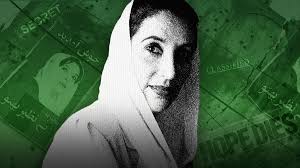 In Owen Bennett-Jones’s ten-part podcast, The Assassination, which he made for the BBC World Service in 2017, listeners become immersed in the circumstances around the murder of Benazir Bhutto ten years earlier. They learn of the security concerns, sectarian hatred, and patriarchal demands faced by even this most privileged woman. Benazir, a dynastic leader from Pakistan’s best-known political family, was perceived by some extremists as belonging to the despised sect of Shiism because her Iranian mother was Shia. She and her husband Asif Ali Zardari – ‘Mr Ten Percent’ – were rightly under investigation on extensive corruption charges. On top of that, misogynists were incensed by her claims to power; indeed, her son Bilawal has written that ‘she was held to a different standard just because she was a woman’.All that being said, the most alarming danger at this authoritarian moment in 2007 was that the powerful wished to silence her calls for the reinstatement of democratic rule in Pakistan.
In Owen Bennett-Jones’s ten-part podcast, The Assassination, which he made for the BBC World Service in 2017, listeners become immersed in the circumstances around the murder of Benazir Bhutto ten years earlier. They learn of the security concerns, sectarian hatred, and patriarchal demands faced by even this most privileged woman. Benazir, a dynastic leader from Pakistan’s best-known political family, was perceived by some extremists as belonging to the despised sect of Shiism because her Iranian mother was Shia. She and her husband Asif Ali Zardari – ‘Mr Ten Percent’ – were rightly under investigation on extensive corruption charges. On top of that, misogynists were incensed by her claims to power; indeed, her son Bilawal has written that ‘she was held to a different standard just because she was a woman’.All that being said, the most alarming danger at this authoritarian moment in 2007 was that the powerful wished to silence her calls for the reinstatement of democratic rule in Pakistan.
 As she returned to her country after eight years of self-imposed exile in Dubai, Benazir reflected in her posthumously-published memoir Reconciliation that she ‘understood the dangers and the risks’. Yet nothing could have prepared her for the violence that erupted within hours of her arrival in the fatherland. What Benazir called her ‘caravan of democracy’, a specially adapted flatbed truck with an escape hatch through which she could wave to the vast crowds gathered to greet her, was attacked by a suicide bomber. The unsuccessful sortie against her on 19 October resulted in the deaths of 179 people in Karachi, including more than fifty of Benazir’s volunteers who were acting as human shields. It is chilling to read Benazir’s words: ‘It was the worst sight I had ever seen, and I’m sure the worst sight that I will ever see as long as I live’. She was right in this assertion, as she would only live for ten more weeks
As she returned to her country after eight years of self-imposed exile in Dubai, Benazir reflected in her posthumously-published memoir Reconciliation that she ‘understood the dangers and the risks’. Yet nothing could have prepared her for the violence that erupted within hours of her arrival in the fatherland. What Benazir called her ‘caravan of democracy’, a specially adapted flatbed truck with an escape hatch through which she could wave to the vast crowds gathered to greet her, was attacked by a suicide bomber. The unsuccessful sortie against her on 19 October resulted in the deaths of 179 people in Karachi, including more than fifty of Benazir’s volunteers who were acting as human shields. It is chilling to read Benazir’s words: ‘It was the worst sight I had ever seen, and I’m sure the worst sight that I will ever see as long as I live’. She was right in this assertion, as she would only live for ten more weeks
Even more chilling is the act of reading Benazir’s Reconciliation alongside her father Zulfikar Ali Bhutto’s If I Am Assassinated.  Zulfikar wrote this book in 1978 from the District Jail, Rawalpindi, where he was languishing after Zia-ul-Haq deposed him in a coup. Zulfikar was hanged by President Zia almost three decades before the assassination of his daughter who, for all her faults, was equally as courageous as her father. In his polemical text, Zulfikar wrote, ‘the regime has gone berserk in not only trying to destroy my image, but in trying to present me to the people of Pakistan and the world as the greatest villain. I did my best. The regime has done its worst’. It is less clear whether Benazir was also doing her best for Pakistan, as she avers in Reconciliation, or simply bent on lining her own pockets. What is certain is that history repeated itself after her assassination. The establishment similarly tied itself into pretzels to ‘prove’ her villainy or persuade the public that her own foolhardiness led to her death.
Zulfikar wrote this book in 1978 from the District Jail, Rawalpindi, where he was languishing after Zia-ul-Haq deposed him in a coup. Zulfikar was hanged by President Zia almost three decades before the assassination of his daughter who, for all her faults, was equally as courageous as her father. In his polemical text, Zulfikar wrote, ‘the regime has gone berserk in not only trying to destroy my image, but in trying to present me to the people of Pakistan and the world as the greatest villain. I did my best. The regime has done its worst’. It is less clear whether Benazir was also doing her best for Pakistan, as she avers in Reconciliation, or simply bent on lining her own pockets. What is certain is that history repeated itself after her assassination. The establishment similarly tied itself into pretzels to ‘prove’ her villainy or persuade the public that her own foolhardiness led to her death.
The former premier knew before she left Dubai that there were four types of suicide bombers who would be likely to target her: al-Qaida; members of both the Pakistani and the Afghan Talibans (the latter probably linked with militants from the then-recent Red Mosque siege); and an unspecified group of extremists from Karachi.
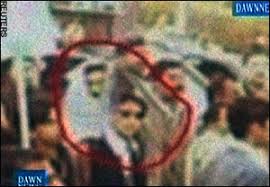 According to Bennett-Jones, the culprit of her eventual assassination on 27 December 2007 was actually a fifteen-year-old member of the Pakistani Taliban. This boy from war-torn South Waziristan was known by the nom de guerre Bilal. He had received training at the famous Khyber Pakhtunkhwa madrassa Darul Uloom Haqqania. It is not for nothing that in her monograph Making Sense of Pakistan Farzana Shaikh refers to ‘[t]he institutional capacity of the clerical establishment to resist and stand aloof from the state’. There was no fallout for the seminary which, despite counting among its alumni the murderer of a former prime minister, continues to thrive as one of Pakistan’s elite madrassas.
According to Bennett-Jones, the culprit of her eventual assassination on 27 December 2007 was actually a fifteen-year-old member of the Pakistani Taliban. This boy from war-torn South Waziristan was known by the nom de guerre Bilal. He had received training at the famous Khyber Pakhtunkhwa madrassa Darul Uloom Haqqania. It is not for nothing that in her monograph Making Sense of Pakistan Farzana Shaikh refers to ‘[t]he institutional capacity of the clerical establishment to resist and stand aloof from the state’. There was no fallout for the seminary which, despite counting among its alumni the murderer of a former prime minister, continues to thrive as one of Pakistan’s elite madrassas.
Detectives found it easy enough to piece together Bilal’s identity due to a macabre quirk of suicide bombings. The human bomb – a person, yet seen by handlers and investigators alike almost as an inanimate object – has his face blown clean off its skull by the explosion. Bilal’s ‘face mask’, as with that of scores of other such attackers, was found near the scene of the crime, eerily intact. Scientists in Cambridge could then ascertain from this flattened visage his appearance. From evidence of an unfused skeleton found in other retrieved body parts, they determined that he was still an adolescent child.
Because of an intercepted phone call in which the Pakistani Taliban leader Baitullah Mehsud congratulated an associate on a 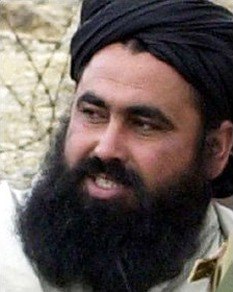 job well done, many commentators (including Bennett-Jones) have concluded that Tehrik-i-Taliban Pakistan were the ones giving young Bilal his orders. But in his book Getting Away with Murder Heraldo Muñoz, the former head of the UN Commission of Inquiry into Benazir’s killing, casts some doubt on this. He says that the tape-recording was received and translated from Pashto extraordinarily quickly. Muñoz expresses ironic admiration at this release at a press conference given by the interior minister from Musharraf’s military junta the very next day. There the authorities also victim-blamed by saying Benazir’s death came when she hit her head on a lever from her vehicle’s escape hatch. This is incorrect: she was likely killed by a bullet to her head, which Bilal shot at close range just before he blew himself up.
job well done, many commentators (including Bennett-Jones) have concluded that Tehrik-i-Taliban Pakistan were the ones giving young Bilal his orders. But in his book Getting Away with Murder Heraldo Muñoz, the former head of the UN Commission of Inquiry into Benazir’s killing, casts some doubt on this. He says that the tape-recording was received and translated from Pashto extraordinarily quickly. Muñoz expresses ironic admiration at this release at a press conference given by the interior minister from Musharraf’s military junta the very next day. There the authorities also victim-blamed by saying Benazir’s death came when she hit her head on a lever from her vehicle’s escape hatch. This is incorrect: she was likely killed by a bullet to her head, which Bilal shot at close range just before he blew himself up.
It should not escape our attention that there had been infiltration of the Pakistan Taliban by the state’s administrative and security Repressive State Apparatuses. Some politicians and espionage chiefs found groups like the Tehrik-i-Taliban Pakistan and the Haqqani Network useful assets in manoeuvring against India (and, to a lesser extent, Russia) in Afghanistan, Kashmir, and elsewhere. There was a degree of sympathy towards the Pakistan Taliban from the spying agency Inter-Services Intelligence (ISI), and more than a dash of ideological overlap between the two organizations.
Beyond the immediate wrong-doers, there were therefore four other culpable parties: Pakistan’s deep state, which as mentioned cultivates jihadists for use in Afghanistan and India; the establishment; General Pervez Musharraf; and members of Benazir’s own party the Pakistan People’s Party (PPP). In his chapter ‘Whodunit’, Muñoz asserts:
In Benazir’s case […], it would seem that the village assassinated her. Al-Qaida gave the order; the Pakistani Taliban executed the attack, possibly backed or at least encouraged by elements of the Establishment; the Musharraf government facilitated the crime by not providing her with adequate security; local senior policemen attempted a cover-up; Benazir’s lead security team failed to properly safeguard her; and most Pakistani political actors would rather turn the page than continue investigating who was behind her assassination.
If it takes a village to raise a child, how horrifying to see that a similar horde is needed to slay a woman.
 Though there is no other evidence to connect him to her murder, Musharraf had motives for not protecting Benazir. She had reneged on two parts of a deal: to support him staying on as president if she made her bid to become prime minister, and not to return to Pakistan until after the election. In an email to CNN journalist Wolf Blitzer (via her friend Mark Siegel) to be published in the event of her death, Benazir blamed Musharraf. Bewailing a litany of impediments: ‘stopping me from taking private cars or using tinted windows or giving jammers or four police mobiles to cover all sides’, she claimed none of these obstacles would be in her way without his say so. Muñoz too calls it ‘discriminatory’ that Benazir wasn’t afforded the top tier of security given to two other ex-prime ministers. In 2015 Siegel would testify in court that Musharraf threatened her over the phone while she was in America preparing for her homecoming. Visibly shaken after taking the call, Benazir reported that the general had darkly pronounced that her security would be dependent on the nature of their relationship.
Though there is no other evidence to connect him to her murder, Musharraf had motives for not protecting Benazir. She had reneged on two parts of a deal: to support him staying on as president if she made her bid to become prime minister, and not to return to Pakistan until after the election. In an email to CNN journalist Wolf Blitzer (via her friend Mark Siegel) to be published in the event of her death, Benazir blamed Musharraf. Bewailing a litany of impediments: ‘stopping me from taking private cars or using tinted windows or giving jammers or four police mobiles to cover all sides’, she claimed none of these obstacles would be in her way without his say so. Muñoz too calls it ‘discriminatory’ that Benazir wasn’t afforded the top tier of security given to two other ex-prime ministers. In 2015 Siegel would testify in court that Musharraf threatened her over the phone while she was in America preparing for her homecoming. Visibly shaken after taking the call, Benazir reported that the general had darkly pronounced that her security would be dependent on the nature of their relationship.
Muñoz compares Musharraf’s machinations to Henry II’s question ‘Will no one rid me of this troublesome priest?’ Just as the king’s minions took this as a directive to kill the archbishop Thomas Becket, so too Musharraf’s laxity proved fatal. The former president was in fact put on trial for her assassination in August 2013, but he refused to appear and in 2017 the court declared him a fugitive, and was closed without coming to a verdict.
The PPP security detail were derelict in their duty of care to protect her. She died almost alone, her party workers having fled the site of the bomb-blast. Only the doughty activist and her close personal friend Naheed Khan was by her side. Khan took her to hospital, where after an hour of failed attempts at resuscitation she was pronounced dead.
As with the PPP security personnel who skulked off, the state also didn’t want to know. There was a police coverup, which can be 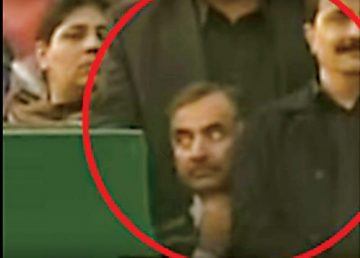 clearly seen in the swift hosing down of two crime scenes: the Karachi failed assassination site and Liaquat Bagh.
clearly seen in the swift hosing down of two crime scenes: the Karachi failed assassination site and Liaquat Bagh.
What followed, Bennett-Jones and Dawn correspondent Ziad Zafar show, were nine other extra-judicial killings. Included among the fallen was a security guard Khalid Shahenshah, who was behaving mysteriously on stage and miming slitting his throat. Standing near Benazir just before the assassination, video footage of his suspicious movements quickly went viral and launched a thousand theories. Shahenshah was sprayed with bullets seven months later at his house in Karachi. Baitullah Mehsud himself also died, in an August 2009 drone attack likely coordinated by the Americans with intelligence from Pakistan’s shadowy ISI.
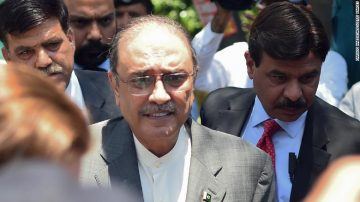 Conspiracy theories began swirling almost immediately. One of the most persistent allegations was aimed at Asif Zardari. Benazir’s husband allegedly had the strongest motive because he benefited when he became Pakistan’s eleventh president in September 2008. This is mere victim-blaming, according to their son Bilawal. To be sure, the former premier still sounds very upset about the death of his wife and his children’s mother in The Assassination’s interviews. But his niece Fatima Bhutto, who hates Zardari since she believes he was behind the murder of her father Mir Murtaza Bhutto in 1996, states in Songs of Blood and Sword that ‘[p]eople were saying the same sort of thing’ about his responsibility for Benazir’s death.
Conspiracy theories began swirling almost immediately. One of the most persistent allegations was aimed at Asif Zardari. Benazir’s husband allegedly had the strongest motive because he benefited when he became Pakistan’s eleventh president in September 2008. This is mere victim-blaming, according to their son Bilawal. To be sure, the former premier still sounds very upset about the death of his wife and his children’s mother in The Assassination’s interviews. But his niece Fatima Bhutto, who hates Zardari since she believes he was behind the murder of her father Mir Murtaza Bhutto in 1996, states in Songs of Blood and Sword that ‘[p]eople were saying the same sort of thing’ about his responsibility for Benazir’s death.
There is no evidence to support these rumours about the widower’s connivance in Benazir’s slaughter, according to Bennett-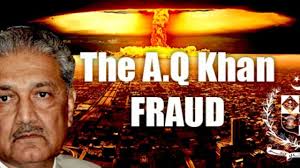 Jones. The BBC reporter instead advances the argument that Benazir crossed the bloodiest of red lines when she said publicly that she would give access for the International Atomic Energy Agency to talk to Abdul Qadeer Khan if she returned to power. AQ, as he is commonly known, had sold Pakistan’s nuclear secrets to the United States’s enemies Iran, North Korea, and Libya. In their book The Nuclear Jihadist, Douglas Frantz and Catherine Collins observe that even as Benazir and AQ got to know each other during her two terms of office (1988-1990 and 1993-1996), the relationship between them ‘remained formal, and she distrusted him’. The authors report an aide’s recollection that Benazir found the nuclear scientist and father of the Islamic bomb unruly, ‘and too closely aligned with the military and intelligence factions that opposed her’. In the post-9/11 climate, she thus had little compunction in saying she would cast him adrift for the IAEA to question.
Jones. The BBC reporter instead advances the argument that Benazir crossed the bloodiest of red lines when she said publicly that she would give access for the International Atomic Energy Agency to talk to Abdul Qadeer Khan if she returned to power. AQ, as he is commonly known, had sold Pakistan’s nuclear secrets to the United States’s enemies Iran, North Korea, and Libya. In their book The Nuclear Jihadist, Douglas Frantz and Catherine Collins observe that even as Benazir and AQ got to know each other during her two terms of office (1988-1990 and 1993-1996), the relationship between them ‘remained formal, and she distrusted him’. The authors report an aide’s recollection that Benazir found the nuclear scientist and father of the Islamic bomb unruly, ‘and too closely aligned with the military and intelligence factions that opposed her’. In the post-9/11 climate, she thus had little compunction in saying she would cast him adrift for the IAEA to question.
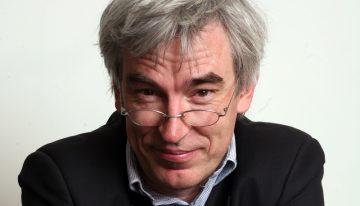
Bennett-Jones’s finding is that this West-friendly statement is what sealed her fate. Winking at or actively involved in AQ’s dealings with rogue states, the military and intelligence factions she spoke of were incandescent at what they saw as her betrayal of Pakistan’s security. Several of the highest officials felt they simply couldn’t afford for this popular politician to rise to the premiership once more.
Whoever is ultimately to blame, Muñoz remarks sagely that Pakistan is a country where matters seldom come to any conclusion. As Benazir herself wrote in her posthumously-published memoir:
[I]n Pakistan things are almost never as they seem. There are always circles within circles, rarely straight lines. This [her attempted assassination] was meant to look like the work of Al Qaeda and the Taliban, and I do not doubt that they were involved. But the sophistication of the plan […] suggested a larger conspiracy.
Small wonder, given the undeniable existence of duplicitous wheels within wheels, that many Pakistanis quickly don tinfoil hats at moments of crisis.
Strange coincidences abounded. The location where assassin Bilal’s mission triumphed was Liaquat National Bagh in Rawalpindi. Not only was this the same city where her father had been killed, but looking further back in history to 1951 it was also the same park where Pakistan’s first prime minister Liaquat Ali Khan had been assassinated. Not only that, but the doctor who spent an hour fruitlessly trying to revive her at Rawalpindi General Hospital was the son of the medic who had done the same for Liaquat fifty-six years before.
 In an essay on Benazir written for a collection I co-edited some years ago, Cara Cilano argues that the female leader is paradoxically understood as at once saviour and a victim. She is often taken to represent both personal and hereditary victimhood and the saving of Pakistan’s supposedly benighted people from despotism. Criticizing the ‘hallowing of Bhutto’s image’ in post-9/11 America, Cilano suggests that Benazir was interpreted by many in 2000s Washington as representing ‘Pakistan’s last best chance for democracy’. Simultaneously, her threatened female corporeality was taken to stand for the civilizational vulnerability of the US and the West more broadly.
In an essay on Benazir written for a collection I co-edited some years ago, Cara Cilano argues that the female leader is paradoxically understood as at once saviour and a victim. She is often taken to represent both personal and hereditary victimhood and the saving of Pakistan’s supposedly benighted people from despotism. Criticizing the ‘hallowing of Bhutto’s image’ in post-9/11 America, Cilano suggests that Benazir was interpreted by many in 2000s Washington as representing ‘Pakistan’s last best chance for democracy’. Simultaneously, her threatened female corporeality was taken to stand for the civilizational vulnerability of the US and the West more broadly.
When compared with Bennett-Jones’s examination of the leadup to Benazir’s assassination, flaws are revealed in both these 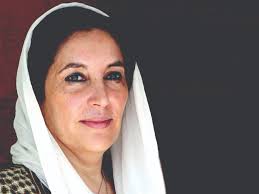 otherwise excellent analyses. For instance, Cilano overstates America’s preference for Benazir. After all, the US refused to provide her with private security from the military company Blackwater. Instead White House insiders favoured a compromise deal where she would work with General Musharraf, George W. Bush’s ‘friend’, after her return to Pakistan. Meanwhile, in his forensically-researched podcast Bennett-Jones nonetheless comes across as rather too embedded with the Bhutto-Zardari family. He downplays though does not deny the accusations of corruption against her and her husband, and contributes to the myth-making around Benazir which Cilano lambasts.
otherwise excellent analyses. For instance, Cilano overstates America’s preference for Benazir. After all, the US refused to provide her with private security from the military company Blackwater. Instead White House insiders favoured a compromise deal where she would work with General Musharraf, George W. Bush’s ‘friend’, after her return to Pakistan. Meanwhile, in his forensically-researched podcast Bennett-Jones nonetheless comes across as rather too embedded with the Bhutto-Zardari family. He downplays though does not deny the accusations of corruption against her and her husband, and contributes to the myth-making around Benazir which Cilano lambasts.
Nonetheless, what a story these nonfiction authors have to work with! In my next post for 3QD, I will return to the subject to see what novelists have done with the raw ingredients of hope, greed, tragedy, revenge, and familial drama surrounding Benazir’s untimely death.
